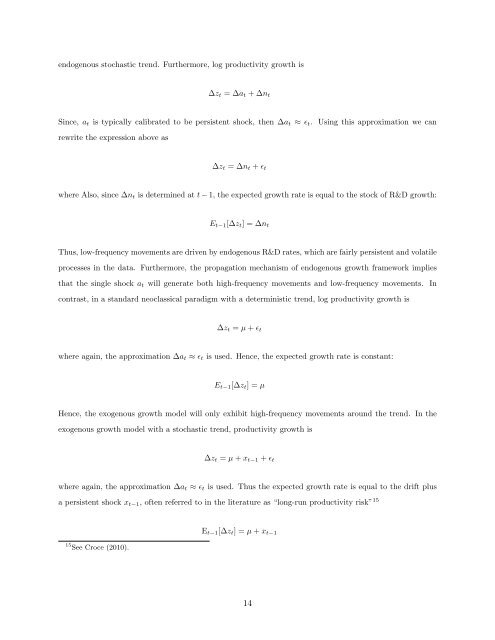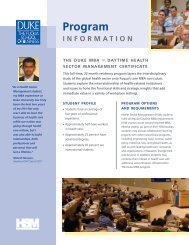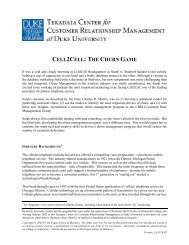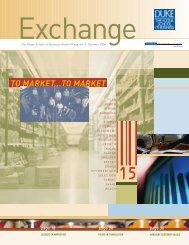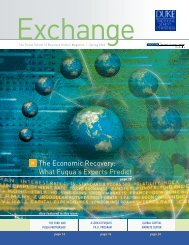Equilibrium Growth, Inflation, and Bond Yields - Duke University's ...
Equilibrium Growth, Inflation, and Bond Yields - Duke University's ...
Equilibrium Growth, Inflation, and Bond Yields - Duke University's ...
Create successful ePaper yourself
Turn your PDF publications into a flip-book with our unique Google optimized e-Paper software.
endogenous stochastic trend. Furthermore, log productivity growth is<br />
∆zt = ∆at + ∆nt<br />
Since, at is typically calibrated to be persistent shock, then ∆at ≈ ɛt. Using this approximation we can<br />
rewrite the expression above as<br />
∆zt = ∆nt + ɛt<br />
where Also, since ∆nt is determined at t − 1, the expected growth rate is equal to the stock of R&D growth:<br />
Et−1[∆zt] = ∆nt<br />
Thus, low-frequency movements are driven by endogenous R&D rates, which are fairly persistent <strong>and</strong> volatile<br />
processes in the data. Furthermore, the propagation mechanism of endogenous growth framework implies<br />
that the single shock at will generate both high-frequency movements <strong>and</strong> low-frequency movements. In<br />
contrast, in a st<strong>and</strong>ard neoclassical paradigm with a deterministic trend, log productivity growth is<br />
∆zt = µ + ɛt<br />
where again, the approximation ∆at ≈ ɛt is used. Hence, the expected growth rate is constant:<br />
Et−1[∆zt] = µ<br />
Hence, the exogenous growth model will only exhibit high-frequency movements around the trend. In the<br />
exogenous growth model with a stochastic trend, productivity growth is<br />
∆zt = µ + xt−1 + ɛt<br />
where again, the approximation ∆at ≈ ɛt is used. Thus the expected growth rate is equal to the drift plus<br />
a persistent shock xt−1, often referred to in the literature as “long-run productivity risk” 15<br />
15 See Croce (2010).<br />
Et−1[∆zt] = µ + xt−1<br />
14


